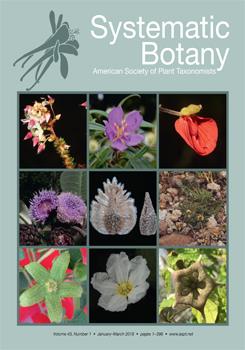Species delimitation in recent radiations is challenging because these species often display overlap in their expression of morphological characters. Here we analyze morphological characters measured from field-collected herbarium specimens and compare them to measurements from live plants grown in a common garden to determine reliable characters that could be used to delimit species in the Myosotis pygmaea (Boraginaceae) species group in New Zealand. This species complex is of primary interest because it includes many threatened species as well as several taxonomically indeterminate entities. The common garden experiment revealed high levels of morphological plasticity within the M. pygmaea species group, as plants in the common garden grew to be strikingly larger than those in the field. The M. pygmaea species complex was found to be a morphologically definable group, and several taxonomically indeterminate entities were placed as being either morphologically similar to the M. pygmaea species group or to other species complexes. In multidimensional scaling analyses of morphological data, of the five named species that make up the M. pygmaea species group, three formed separate clusters (M. pygmaea, M. glauca, and M. brevis), and the two others were indistinguishable from each other (M. antarctica and M. drucei). This study represents an important step towards a planned integrative taxonomic revision of the M. pygmaea species group, and highlights the value of morphological data collected from a common garden experiment.
How to translate text using browser tools
18 April 2018
Bolstering Species Delimitation in Difficult Species Complexes by Analyzing Herbarium and Common Garden Morphological Data: A Case Study Using the New Zealand Native Myosotis pygmaea Species Group (Boraginaceae)
Jessica M. Prebble,
Heidi M. Meudt,
Jennifer A. Tate,
V. Vaughan Symonds
ACCESS THE FULL ARTICLE

Systematic Botany
Vol. 43 • No. 1
Jan-Mar 2018
Vol. 43 • No. 1
Jan-Mar 2018
Common garden
forget-me-nots
morphological analyses
phenotypic plasticity
species limits
taxonomy




